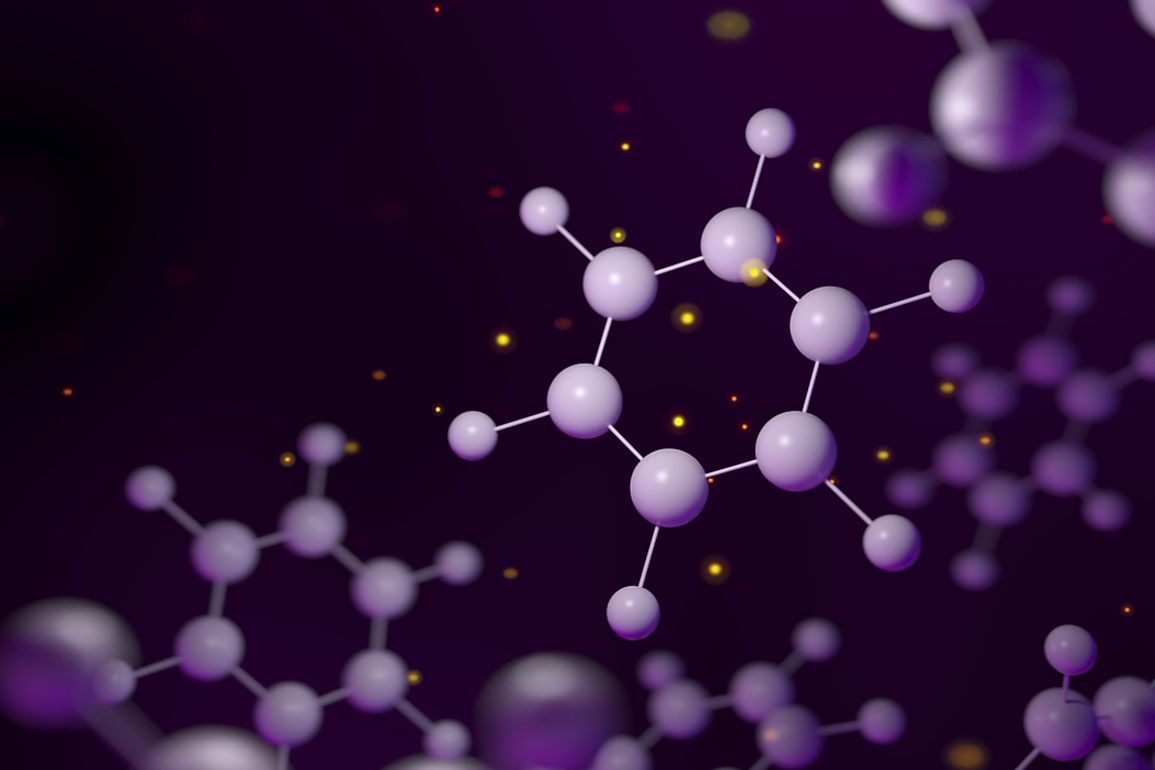What is Benzene?

Benzene is a liquid chemical that has a characteristic of sweet smell and has no color. It is naturally present in crude oil although it can be synthesized from petroleum products. Benzene is categorized as an aromatic hydrocarbon because of the sequential pi-bond between the carbon atoms which is usually cyclic. Benzene has been found to be a valuable precursor in the manufacture of many materials which include but not limited to drugs, dyes, lubricants, rubbers, detergents, pesticides, explosives, and plastics among many other materials.
History
Many scientists have ventured into the study of benzene. Some of them are Linus Pauling and Michael Faraday. In 1825, Faraday announced that it was isolated from oil gas. He called it bicarburet of hydrogen. In 1833, by distilling benzoic acid, Eilhard Mitscherlich was able to produce benzene. Twelve years later, Charles Mansfield isolated benzene from coal tar. He later began producing benzene using the coal tar procedure on an industrial scale for the first time in 1849. In 1997, benzene was discovered in outer space. Benzene’s empirical formula was known for a long time. It had, however, proven to be a daunting task to determine its polyunsaturated structure. A German chemist Friedrich August Kekule published a paper which implied that benzene’s structure had six carbon atoms that had alternating double and single bonds. He proposed that benzene has a ring structure. He used evidence that had been gathered over the years to defend his proposed structure.
Structure
The chemical formula of benzene is C6H6 and has a ring structure. The carbon (C-C) bonds are of the same length (140 pm). This length is longer than a double bond’s length (134 pm) and shorter than a single bond (147 pm). Electron delocalization can explain its characteristic of being intermediary in length. This delocalization is referred to as ‘aromaticity.’ Useful chemicals are derived from benzene by replacing a hydrogen atom(s) with a functional group.
Production
Before WWII, benzene was majorly a byproduct of the production of coke within the steel industry. As from the 1950’s, benzene has been mainly coming from the petroleum industry due to its enormous demand. There are four primary chemical processes used to produce industrial benzene, and they include toluene hydrodealkylation, catalytic reforming, steam cracking, and toluene disproportionation. Between 1978 and 1981, the primary process of benzene production in the US was catalytic reforming, accounting for about 44-50% of total benzene production in the country.
Uses
Benzene was used as an aftershave lotion between the 19th and 20th centuries. It was also used as an industrial solvent. With time, its toxic nature was obvious. Ludwig Roselius made popular the use of Benzene for decaffeinating coffee. As a result, ‘Sanka’ was produced. Before the 1950’s, benzene was used as a gasoline additive. It reduced engine knocks. Nowadays, benzene is used in the production of other chemicals as an intermediate product. Benzene derivatives include (1) styrene, in the production of plastics and polymer; (2) phenol, which is used to make adhesives as well as resins; and (3) cyclohexane, which is used in the production of nylon.
Health effects
Benzene has been known to increase the risk of cancer. It causes the failure of the bone marrow. Benzene has also been linked to aplastic anemia, cardiovascular diseases, and acute leukemia. According to the American Petroleum Institute in 1948, the only concentration of benzene that is safe is zero (0).











